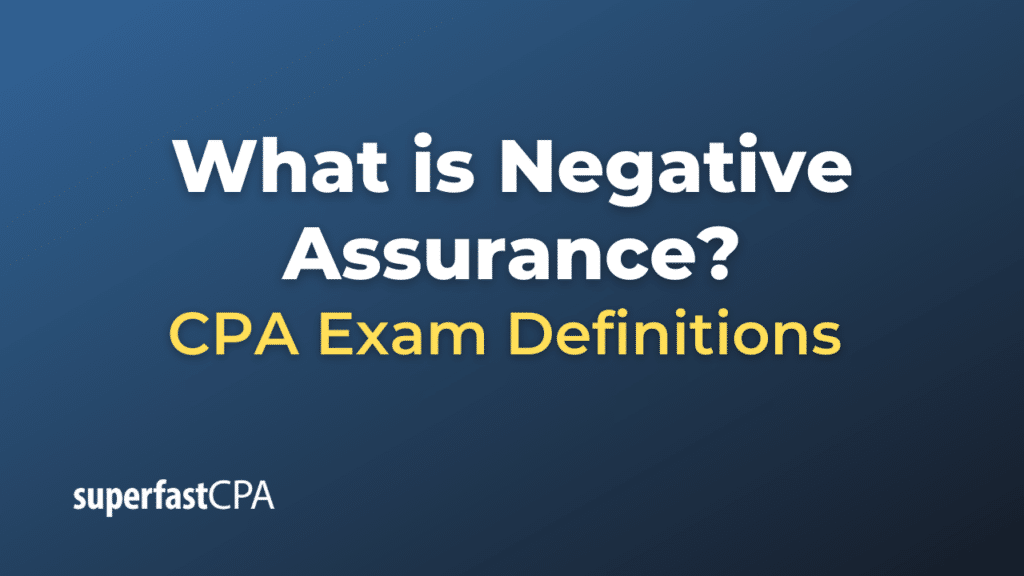Negative Assurance
Negative assurance is a representation made by an auditor stating that financial statements do not appear to contain material misstatements. It is a less strong statement than positive assurance, where the auditor affirmatively states that the financial statements are fairly and accurately presented.
Negative assurance is typically provided when an auditor has not performed a full examination of a company’s financial statements but has performed a review. A review usually involves less detailed testing and procedures compared to a full audit.
In other words, while an auditor providing positive assurance is saying, “I’ve looked carefully, and everything appears correct,” an auditor providing negative assurance is saying something more like, “I’ve looked over this and nothing has jumped out at me as being wrong.
Negative assurance is often used in the context of comfort letters provided by auditors in connection with securities offerings. These letters typically include negative assurance on unaudited financial information and other financial data contained in the offering document.
It’s important to note that while negative assurance provides some level of comfort to the users of financial information, it is not a substitute for a full audit and does not provide the same level of assurance as a full audit.
Example of Negative Assurance
Let’s use an example of a public company looking to issue additional securities in a secondary offering to raise more capital.
As part of the process, the underwriters of the offering ask the company’s independent auditors to provide a “comfort letter”. This comfort letter serves to give the underwriters some assurance about the financial information presented in the offering documents.
Since it might not be feasible or necessary for the auditors to perform a full audit of the company’s financials specifically for this offering, the auditors may instead conduct a review. A review involves less detailed testing and procedures than a full audit.
In their comfort letter, the auditors might then provide negative assurance, saying something along the lines of: “Based on our review, no material modifications need to be made to the financial statements for them to be in accordance with the applicable financial reporting framework.
In this statement, the auditors aren’t positively asserting that the financial statements are completely accurate (as they might with a full audit). Instead, they’re saying that, based on their review, nothing has come to their attention that causes them to believe the financial statements are materially misstated.
This gives the underwriters, and ultimately investors, some level of comfort about the financial information, but it’s important to remember that it doesn’t provide the same level of assurance as a full audit would.













